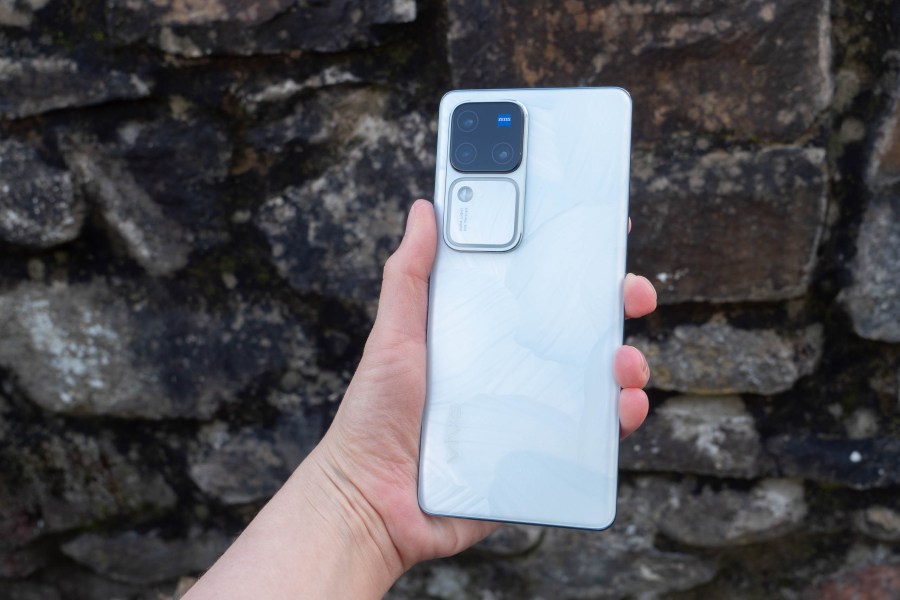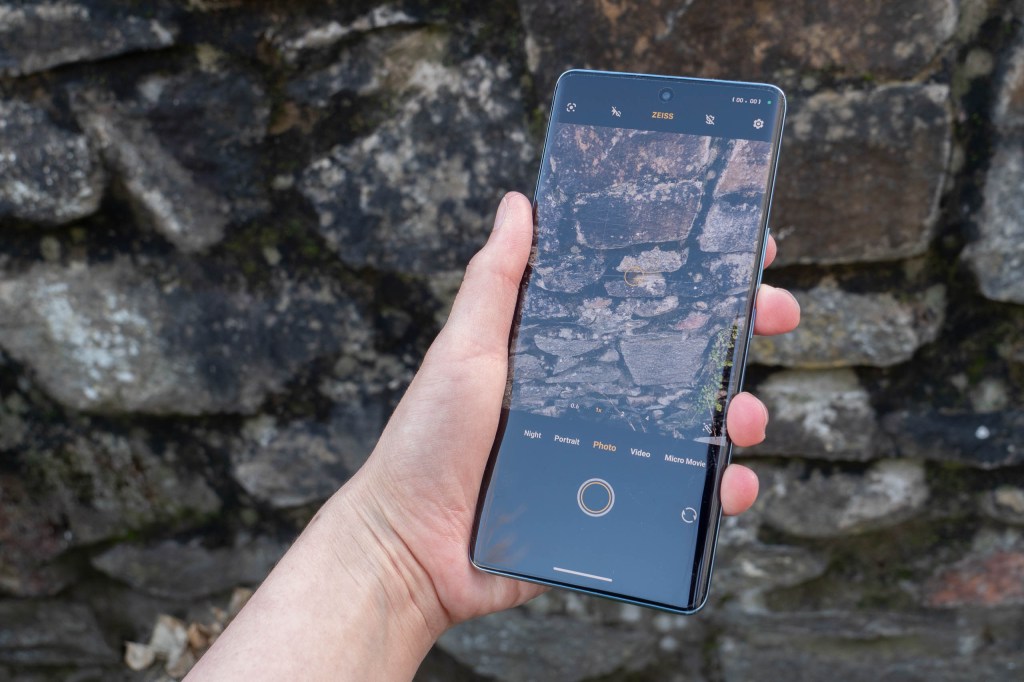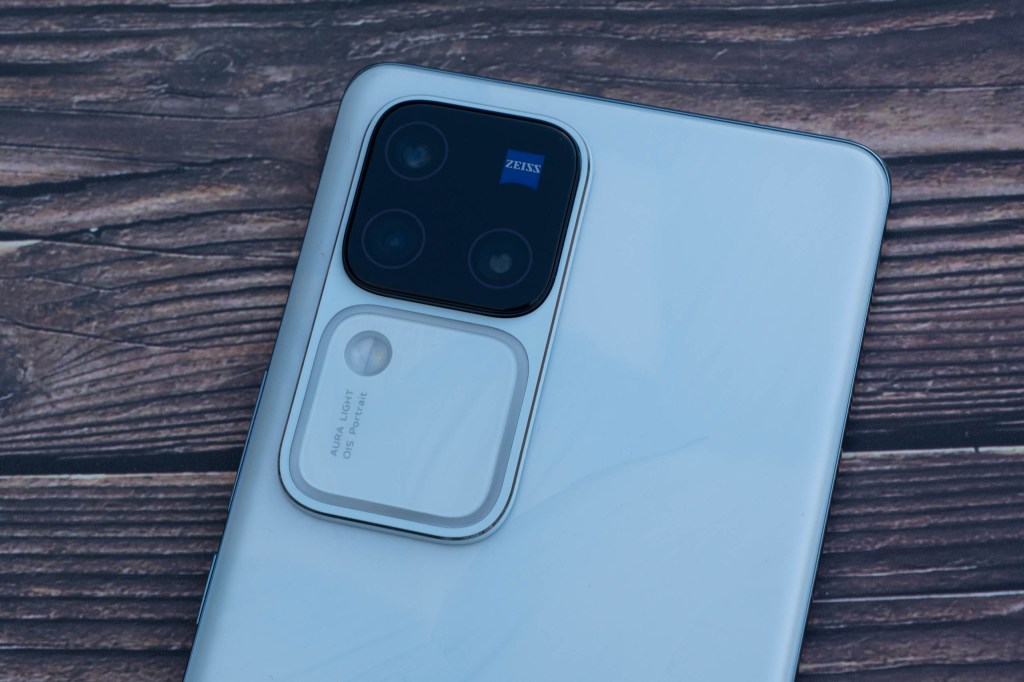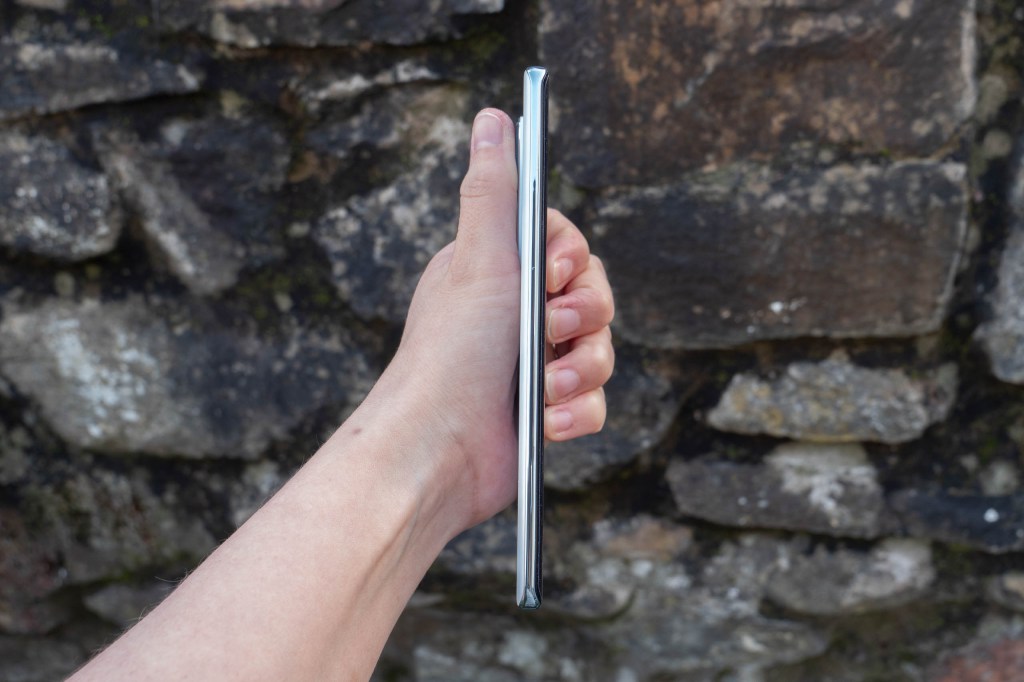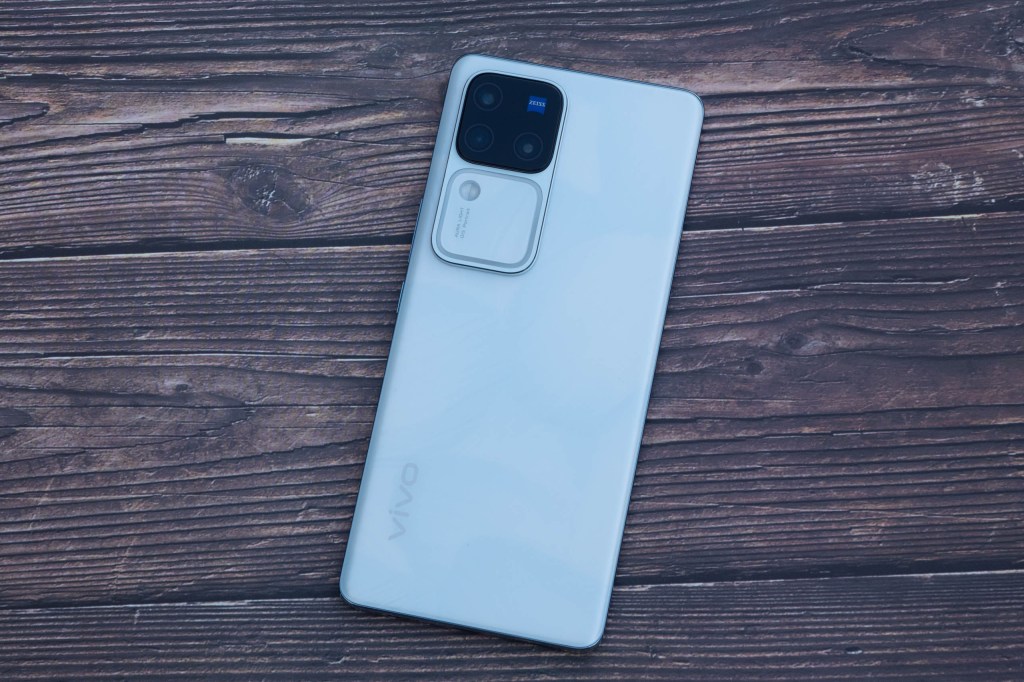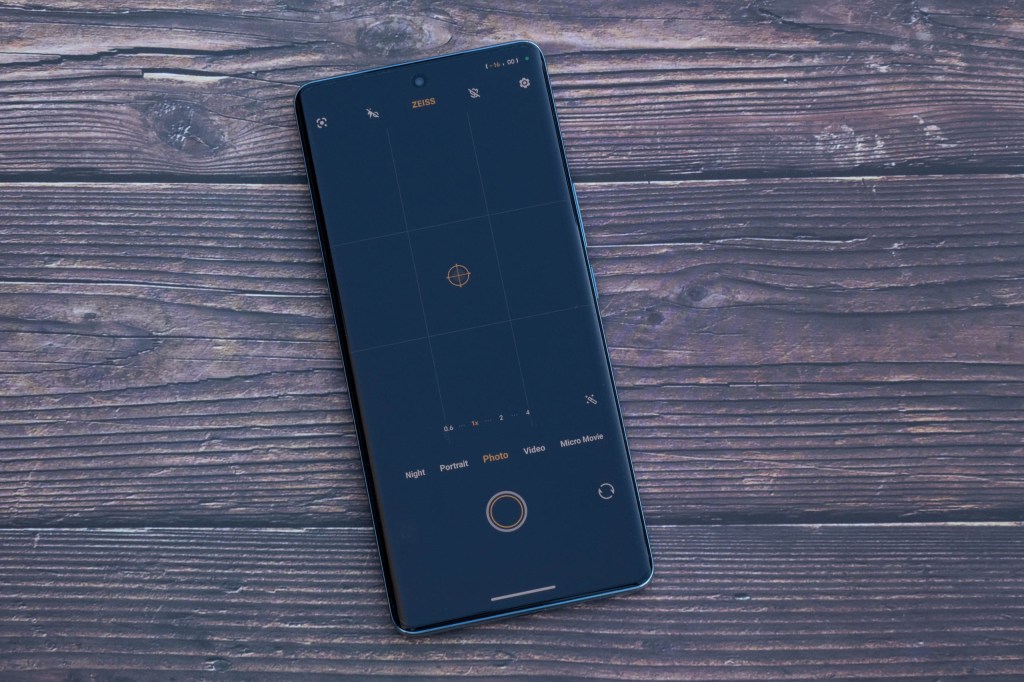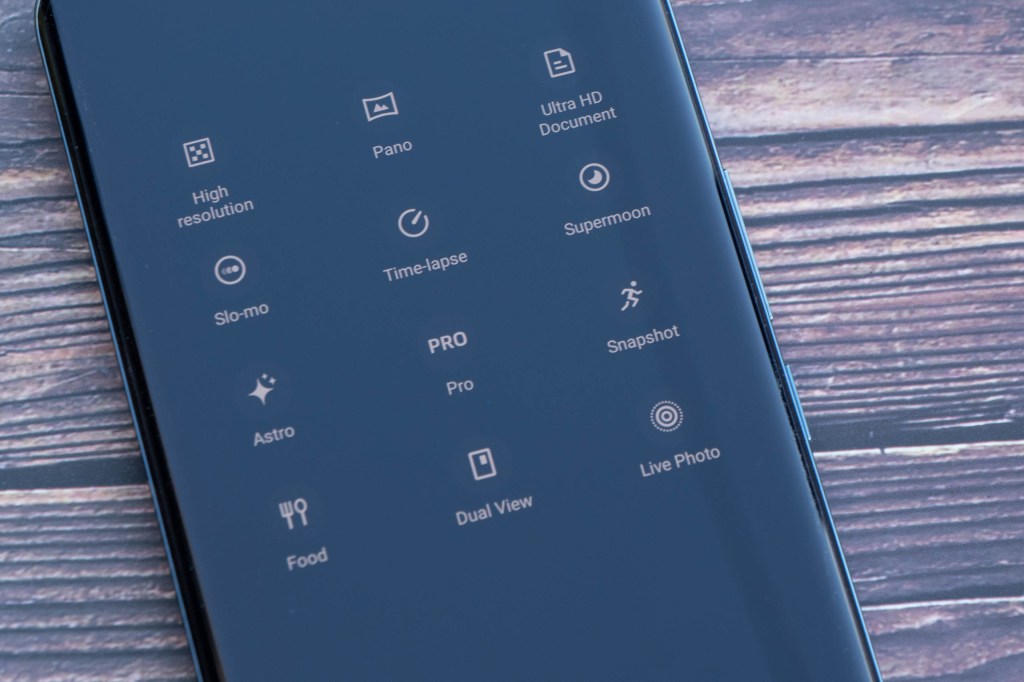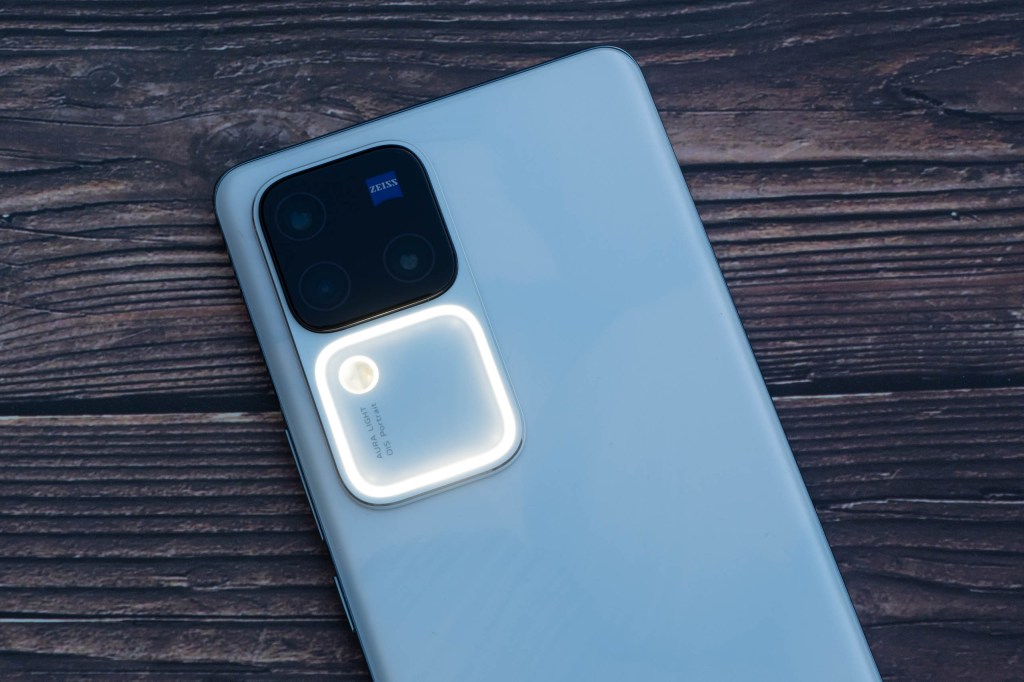Vivo is a Chinese brand which in recent years has produced some excellent smartphones. The Vivo V30 Pro’s partnership with Zeiss should see it appeal to those who are looking for well-performing mid-range camera in their smartphone.
Amateur Photographer verdict
A slim and affordable mid range phone with lots of interesting specs. It sports a Zeiss lens and puts out a very good performance overall. I hope we will see it soon outside of Asia.- High-resolution triple lens setup
- Interesting portrait mode
- High-resolution AF selfie camera
- No automatic macro mode
- Some strange default options
- Limited availability worldwide
At a glance:
- 50MP f/1.8 23mm equivalent Sony IMX920 sensor, OIS
- 50MP f/2.0 15mm equivalent Samsung ISOCELL JN1 sensor
- 50MP f/1.8 50mm equivalent Sony IMX816 sensor
- 50MP AF selfie camera
- 4K video up to 60fps
- 6.78-inch, 2800 x 1260, 2800 nits peak brightness, 120Hz screen
- Operating system – Funtouch OS 14, based on Android 14
- Processor – MediaTek Dimension 8200
The V30 Pro sits above the standard Vivo V30, and offers a few more specifications – such as an extra lens. The V30 Pro comes a few months after the launch of the Vivo X100, which has even better camera specifications, making the V30 Pro a more affordable, or mid-range option. That said, the V30 Pro seems to have been specifically designed with portrait photography in mind, so if that’s something you do regularly, it could be that the V30 Pro is more appealing than the X100.
At the time of writing, the X30 Pro is only available to buy in limited markets, starting in Indonesia and Thailand. It will later come to other Asian markets, but we’ve no word yet on other world releases, such as Europe or the US. It is priced at IDR7,999K or THB 19,999, which converts to around $560/£440, putting it very firmly in the lower end of the market, price wise. If it remains at these prices should it come to Europe / US it could be a fantastic deal – so it’ll be interesting to see if that happens.
How we test camera phones
We review smartphones from the perspective of choosing one for its photography and camera performance. We look at what the Vivo V30 Pro offers, and the features included for photography and video, paying particular attention to the cameras on the phone, photo editing capabilities, as well as the output from each different lens.
Vivo V30 Pro – Features
With a triple-lens setup, the V30 Pro is similar in many ways to lots of other flagship smartphones. Each of the sensors has 50MP, which is still relatively unusual however. You get a main camera (23mm equivalent), an ultra wide (15mm equivalent) and 2x “Portrait” lens (50mm equivalent). Digital zoom options up to 20x are also available.
An array of portrait features, such as an “Aura” light, different Zeiss lens recreations and posing guides are included. You can also record video up to 4K 60fps, while there are also other video functions such as slow-motion and time-lapse. Micro Movie is a useful function for content creators as it gives you a way to create short video clips, and also edit them together with other things like pictures and titles.
Other notable specifications include a 5000mAh battery, quick charging and a super slim body.
Vivo V30 Pro – Handling and Design
Despite this being a mid-range or even lower-end phone, the Vivo V30 Pro has an attractive look and design. It’s on the bigger side at 6.78”, but that’s pretty standard for smartphones these days. Its big selling point is its slimness, and it is noticeably thinner than other smartphones, which is particularly impressive considering it still manages to contain a high-capacity 5000mAh battery.
The V30 Pro comes in four different colourways. We’ve been using the Bloom White, which has a quite unusual patterning, but arguably won’t be to everybody’s tastes. You can alternatively choose Waving Aqua, Noble Black or Lush Green – the latter two being block colours in a more straightforward style.
With a peak brightness of 2800 nits, the Vivo V30 Pro is not the brightest on the market, but is not far off, and great for a phone of its price. It tends to look bright enough in most situations, with the 1.5K resolution and 120Hz rate also looking pretty good.
As you would expect from a phone at this price point, it’s not the toughest on the market. For example it has IP54 dust and water resistance – meaning it can withstand splashes but you wouldn’t want to submerge it. It also has “Schott a” glass for the screen, while the rest of the phone has reinforced sides and aluminium alloy corners. For every day usage it should withstand knocks and scrapes – but handily it comes with a basic case in the box.
Vivo V30 Pro – Native camera app
Like many Android phones, the V30 Pro has a well-featured and extensive native camera app with lots of different shooting options.
The default shooting mode is Photo, which is what you’ll probably use for most of your shots. With this mode you can use any of the three lenses, as well as accessing digital zoom.
In this mode, you’ll find different colour options which are worth experimenting with. The default is “Vivid”, which is good to use an all-purpose choice, creating bold colours which aren’t ridiculously over the top, but bright and punchy. There’s also Textured, and Natural, the latter of which is labelled as “Zeiss”. I found I used the Zeiss Natural mode fairly frequently as it created a slightly more muted palette which I prefer – but it’s worth trying all three.
Many phones these days have an automatic macro mode that engages as soon as you get close to a subject. You won’t find that here, but you can tap a small flower icon to activate one manually. This is called Super Macro and allows you to get incredibly close to the subject – looking at the EXIF it appears to work by switching to the ultra wide lens, as is common with smartphone macro modes.
There are other shooting modes you can switch to, with Portrait mode perhaps being the most interesting – it’s certainly one of the most extensive portrait modes I’ve seen on a phone. Here you can choose between the 1x, 2x or 4x lens, but you can also do fun things like change the simulated aperture value, and change the shape of the bokeh. There’s “Beauty” mode for things likes smoothing out wrinkles and so on – but I generally prefer to leave those switched off as they tend to look very unnatural.
An unusual touch is “Postures” which will superimpose an outline of various poses onto the screen for your subject(s) to attempt to match. It’s a bit of a twee concept, but it could be a fun thing to experiment with if you’re not sure how to pose your subjects. I imagine kids might find it quite entertaining, too.
Perhaps the most interesting thing however is the “Aura” light, found on the back of the phone. This is a bit like a small ring light, and can be set to always on to constantly illuminate your subject. Not only that, but you can set it to different colour temperatures – or leave it in automatic mode. Again, it’s a fun thing to experiment with, especially if you especially like portraits.
The Aura light can also be used in Food mode, found in the “More” tab. Here you can get close to food subjects and enjoy the benefit of even lighting where otherwise the shadow cast by the phone (and your hand) might get in the way. It’s labelled as a Food mode, but of course you could also use it for other subjects. The Aura light can also be switched on in the main Photo mode, and when the macro setting is switched on.
A Night mode for shooting in low light can be activated. This also includes a “supermoon” (where AI enhancement will step in if you zoom in on the moon) and “Astro” mode (which requires the phone to be mounted on a tripod).
Further shooting modes include video options, time-lapse, high-resolution, panorama and a Pro mode. With the Pro mode you can adjust options such as shutter speed, white balance, AF and so on, and you can also shoot in raw format. The three different colour options (Vivid, Textured and Natural) are also available here, too.
Vivo V30 Pro – Image Quality and Performance

For a relatively low-cost phone, the V30 Pro actually performs impressively well, showing off that you don’t necessarily need to spend huge amounts to get a good performer (assuming you’re in a country which actually sells this phone).
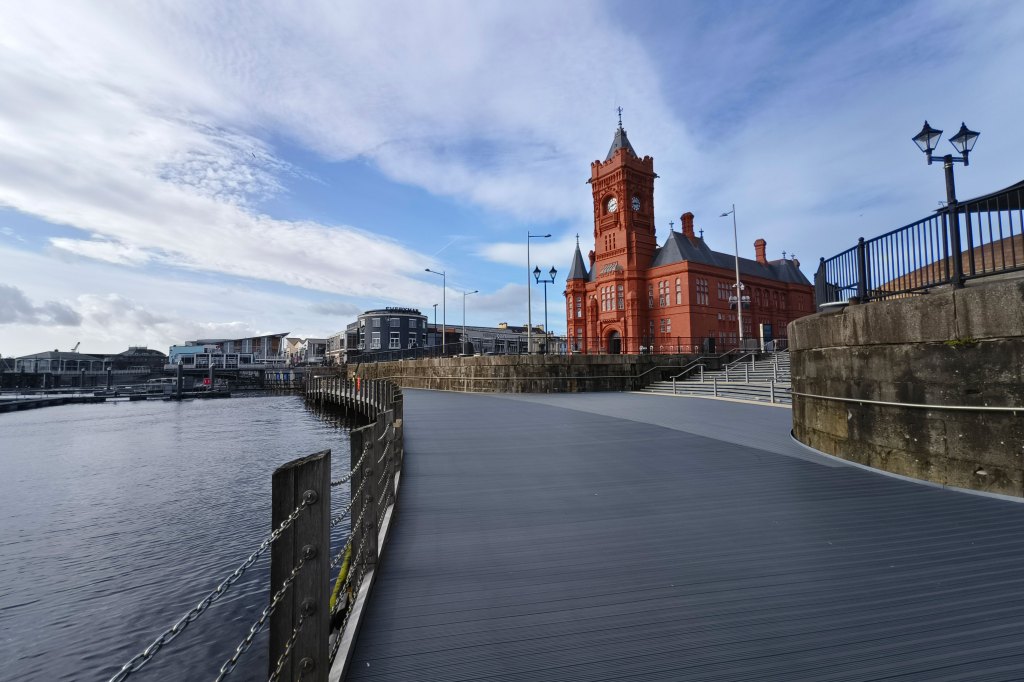
Colours are well-presented and realistic – particularly if you use the Zeiss “Natural” setting. If you prefer a bit more punch, you can switch to Vibrant mode and get good results too – albeit a little more “hyper-realistic”.

The high-resolution sensors do a good job across all three lenses, and although the 1x lens puts in the best performance, the ultra wide and the 2x telephoto are also very good too. The ultra wide shows some softness in the corners if you’re looking at images larger than a phone screen, but the overall impression is pretty good. The colours are a little mismatched between the wide and the ultrawide lenses – this isn’t always hugely noticeable, but becomes a bit more prominent when shooting things like skies. Still, for a sub £500 phone, this is to be expected and it’s still very good overall.

Low light mode produces some usable results – particularly if you’re going to be mainly sharing images on social media and the like. You can see some noticeable smudging and loss of detail, particularly if you examine closely, and it’s certainly not on a pair with more expensive flagships out there – but again, it’s a good performance for a phone at this price point. Again, the best results come from the 1x lens, with the ultrawide and and 2x lens being a noticeable drop down in quality.

Portrait mode is interesting thanks to the Aura light and the range of Zeiss bokeh options you can employ. The Aura light is useful for shooting in lower light situations, or for adding interesting catchlights to the eyes. However, the results can be varied. Using the default settings, I found that the skin came out looking quite plasticky – this is improved by switching HD portrait off though. Outlines are generally pretty good, but you might find that if there’s something “complex” in the background, the phone gets easily confused. The different bokeh options are fun to play with, particularly if you’ve got multiple lights or light-sources in the background.

The selfie camera has AF – which is excellent for a phone at this price point. Again here, I’d recommend switching off all the strange face smoothing effects – unless you like them of course – as the “real” results are pretty good without the need for too much messing about.

While it’s a shame that there’s no automatic macro mode, at least you get the option to use the “super macro” mode which you can select manually. The results are reasonably good, although a little bit smudgy in places. It’s good for getting super-close to a subject and would be fine to use small or on social media. It’s interesting that a mid-range phone like this would have a macro mode when even some higher-end models such as the Samsung S24+ doesn’t have the same functionality.

Video can be shot at up to 4K 60fps. At this resolution and frame rate you can’t use stabilisation, and as a result, the video can be a little shakier than you might like. Switching it on for 4K 30fps results in a much smoother experience. Other than that the video quality isn’t too bad, though there is some noticeable aberrations when shooting high contrast subjects. You can also shoot 4K 30fps video with the selfie camera. Again, for a phone at this price point, the results are pretty good, and certainly fine for the type of general short video clips most users will likely be making.
Vivo V30 Pro – Value for Money
Given that you can’t buy the Vivo V30 Pro in major markets such as the US or Europe, it’s somewhat hard to comment on value for money.
The pricing in Thailand or Indonesia converts to an extremely attractive price in dollars or sterling, but it’s not guaranteed that even if the phone came to these markets, it would be a straight conversion price.

However, assuming that it stays at roughly the same mark, this would make an excellent value phone. If you’re looking not to spend a huge amount but still want something that looks and feels like a flagship, it could be a good choice.
Vivo V30 Pro Review – Verdict
There is a lot to like about the V30 Pro. You get a lot of interesting specifications for your money, and on the whole it’s a very good performer.
Image quality is good in most situations, and while not perfect in low light, for the price point it delivers well enough for social media and small prints. The portrait mode has some interesting options, and again, although it’s not perfect, it’s fun to use and creates good results a lot of the time.
The body of the phone, being so thin and light, perhaps makes it appealing to those looking for something aesthetically pleasing, while it’s a bonus that this slimness hasn’t meant a reduction in battery size.
Of course, the biggest downside of the V30 Pro is its availability. While it’s great for the limited markets that it’s currently on sale in, the rest of the world has to do without. That’s a real shame considering how expensive many flagships are – having good mid-priced options is always a welcome thing.
Perhaps Vivo will bring the V30 Pro to further markets in time, which will broaden its appeal.

Specifications:
| Ultra-wide camera | Samsung ISOCELL JN1 50MP sensor, 15mm equivalent, f/2.0 |
| Wide camera | Sony IMX920 50MP sensor, 23mm equivalent, f/1.8, OIS |
| Telephoto camera | Sony IMX816 50MP sensor, 50mm equivalent, f/1.8 |
| Front selfie camera | 50MP, f/2.0, with AF |
| Display | 6.78-inch AMOLED 2800×1260 resolution, 120Hz, 2800 nits |
| Operating system | Funtouch OS 14 (based on Android 14) |
| Dimensions | 164.36 x 75.10 x 7.45mm |
| Weight | 188g |

